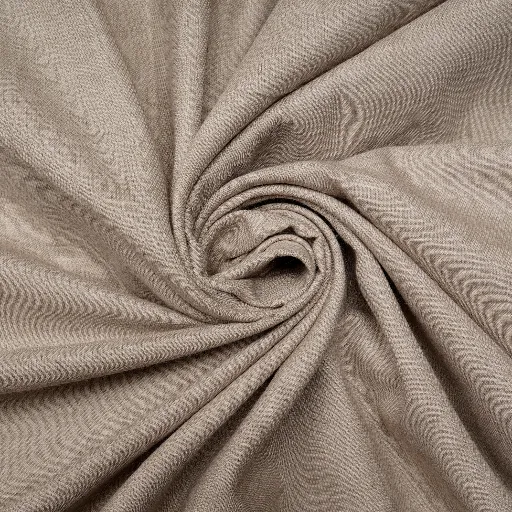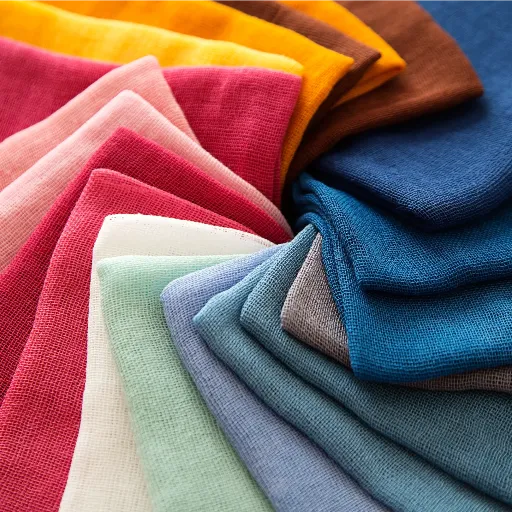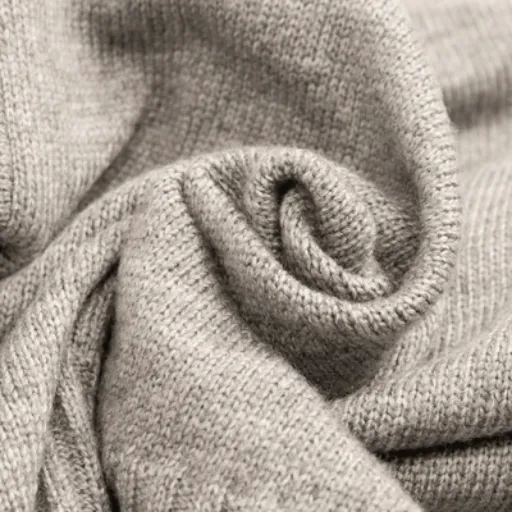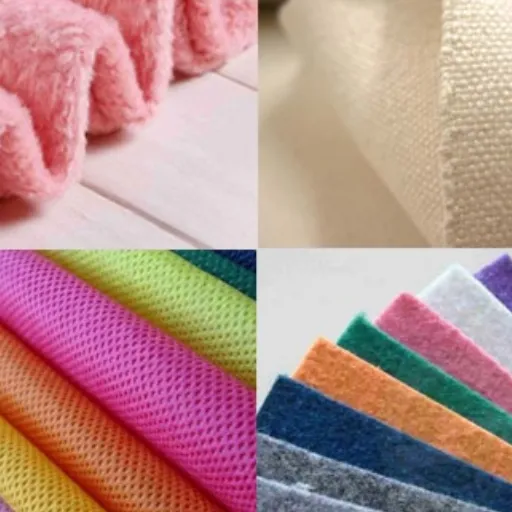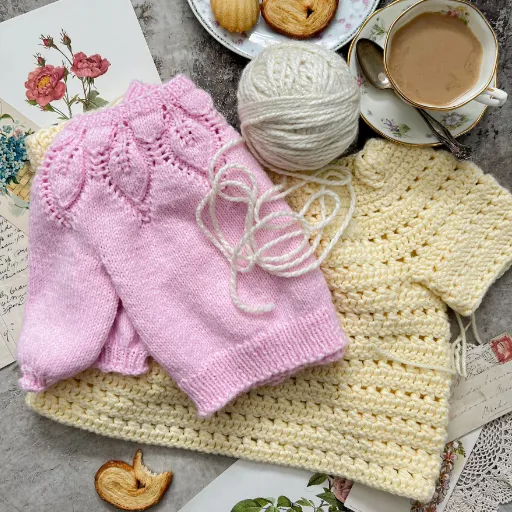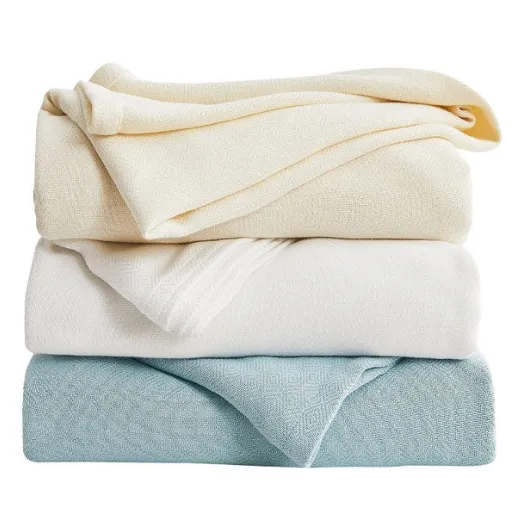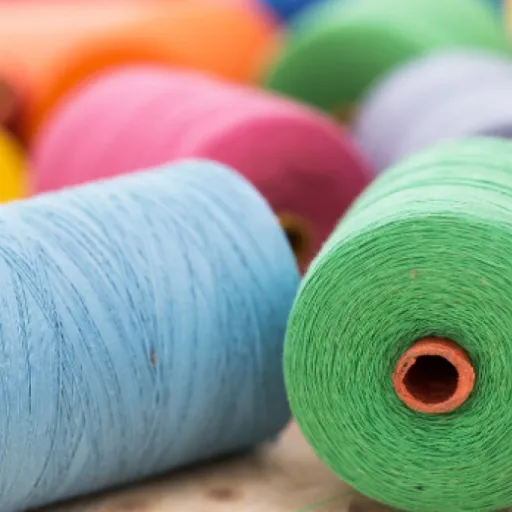In the discussion of synthetic fibers, the textile and crafting world has two dominant names – polyester yarn and acrylic yarn. Both of these types of fibers have managed to carve out a deep niche across numerous sectors, including fashion, upholstery, DIY projects, and many more. But how do they compare? For an artisan, whether a professional or an enthusiast attempting for one’s own bespoke creations, understanding the differences of choice between them holds paramount importance. The intended purpose of a manufacturer seeking to enhance cost-effectiveness or streamline functionality would further require a comprehensive understanding of the differences. This article expounds on the two fiber types and strives to identify the most prominent differences between them while focusing on their characteristics, uses, and performance measures. Get ready to explore the complexities of these two synthetic superstars and simplify choices for your upcoming projects.
What are the Differences Between Polyester Yarn and Acrylic Yarn?
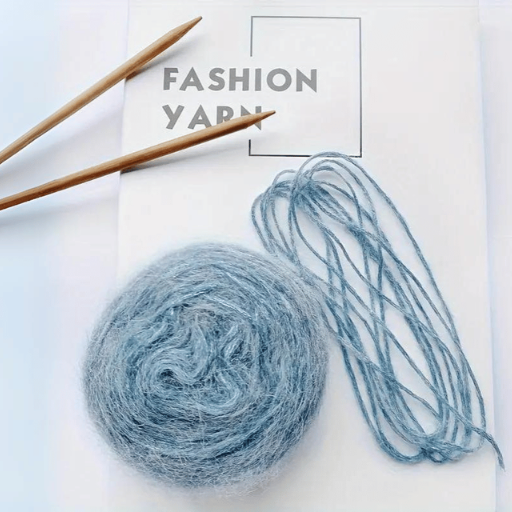
Polyester and acrylic yarn differ primarily with regards composition, their durability, and their uses. Polyster yarn is manufactured from polymers based on petrol which makes it very durable, resistant to any stretching or damages, and perfectly suited for long term activewear and upholstery products. Acrylic yarn is made from polyacrylonitrile polymer, and it is valued for its softness, warmth, and similarity to wool, which makes it ideal for the creation of knitted garments such as sweaters and scarves.
Acrylic yarn is more preferable than polyester yarn in cases where comfort, feel, and aesthetics take precedence. The two have in common light weight, low cost, and economy, but polyester is a little more resilient, while acrylic has better resemblance to natural fibers.
Understanding Polyester and Acrylic Fibers
Due to their high durability and persisting tensile strength in the face of stretching, shrinking, and rubbing, polyester fibers are perfectly suited for outdoor clothing, upholstery, and industrial fabrics which demand heavy-duty wear and tear. Coupled with these traits, polyester also has the advantage of being hydrophobic which allows for quick drying while preventing absorption. Mold and mildew have little effect on these textiles. Furthermore, polyester is very UV resistant and will keep these textiles in good form even after multiple washes and sun exposure.
Acrylic fibers focus more on softness and warmth and less on long-term durability. Although acrylic is moderately strong, it is more vulnerable to damage compared to polyester, especially with high levels of physical stress. It does have some strengths which include effective retention of vibrancy and color which makes is widely used in vivid textiles and garments. Acrylic does tend to pill, and so laundering gently is required to maintain the texture and appearance of acrylic surfaces. Care typically includes cold water washing coupled with avoidance of high heat during drying to avert distortion of the fibers.
Key Differences in Properties of Polyester and Acrylic
|
Property |
Polyester |
Acrylic |
|---|---|---|
|
Durability |
Highly durable under rigorous use |
Susceptible to pilling with prolonged use |
|
Color Retention |
Retains color moderately well |
Excellent color retention over time |
|
Moisture Resistance |
Highly moisture-resistant |
Moderate moisture resistance |
|
Texture |
Smooth and slightly stiff |
Soft and wool-like |
|
Warmth |
Provides moderate warmth |
Excellent insulation for warmth |
|
Breathability |
Low breathability |
Moderate breathability |
|
Ease of Care |
Machine washable, quick to dry |
Easy care, avoid high heat drying |
|
Stretchability |
Limited stretch |
Moderate stretch under use |
|
UV Resistance |
Provides UV resistance |
Limited UV resistance |
|
Cost |
Generally affordable |
Often costlier than polyester |
|
Environmental Impact |
Synthetic, less biodegradable |
Synthetic, also less biodegradable |
|
Softness |
Relatively smooth |
Softer than polyester |
Which Yarn Type is More Durable?
Durability of yarns, such as that made of polyester or nylon, need special attention given to the structure characteristics and their intended use. Polyester has superb stretching, shrinking, and chemical agent resistance when compared to other polymers, this makes polyester durable with consistent using and exposure to environmental factors such as moisture and UV. While nylon is also very strong and durable, its stretching capacity and abrasiveness make it a preferred polymer for heavy-duty devices such as industrial materials or outdoor machinery.
Nylon’s UV sensitivity forms a weakness for long term outdoor use despite its high tensile strength and flexibility. In comparison, polyester’s UV resistance gives it an advantage in long term use, maintaining structural integrity throughout exposure. In summary, the durability of such yarns depends the needs of the task requirements.
How to Choose Between Polyester and Acrylic Yarn?
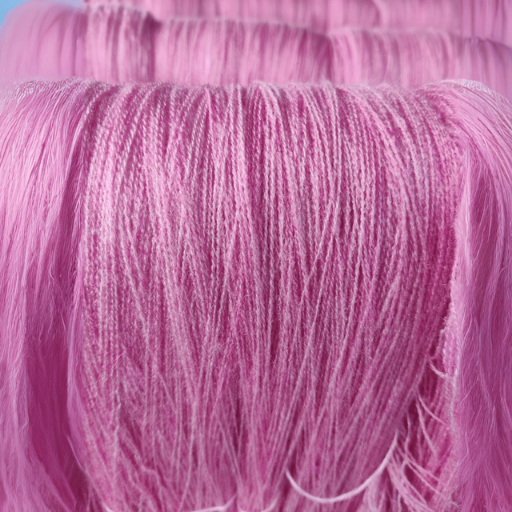
In picking between yarns made of acrylic and polyester, these are the main considerations:
- Purpose – Polyester yarn is a good fit for projects that need strength, moisture resistance, and high tensile strength, for example, outdoor gear or upholstery. The textured yarn would be best used for clothing or blankets as it is softer and lighter in comparison to acrylic yarn.
- Durability – For prolonged outdoor use, acrylic yarn will not withstand as long as polyester because it is far less UV resistant. If less direct sunlight is a possibility then acrylic provides great overall value when priced against other options for casual daily wear.
- Ease of Maintenance – Acrylics and polyesters both resist dirt build up, however, washing polyesters is a bit easier. With regards to both low care and easy washing, acrylic wins but does tend to form pills after frequent use.
- Comfort – Polyester blends are more protective against wear, which makes it ideal for products that require toughness. Contact with skin, acrylic is softer and considerably more comfortable for skin and hence, is used as a material for clothing.
It is essential to select the material most compatible with your specific project details, work conditions, and cleaning requirements.
Comfort and Wearability: Polyester vs Acrylic
When comparing durability and longevity, wear and tear from using acute actions is far more damaging to acrylic than it is to polyester. The abrasion resistance of polyester fibers make them to be very durable, and protect them from tearing, stretching, and shrinking. This strength allows these materials to be ideal for heavily used furnishings or those exposed to harsh conditions such as garments meant for outdoor use and furniture fabrics. Polyester also outlasts many other materials for the retention of shape and strength over time, and even with repeated washing, polyesters are enduring outdoors due to lower adverse effects from UV deterioration.
Acrylic, while still possessing durability, is more vulnerable than polyester. Over time, acrylic fibers damage due to pilling, specifically in high-friction zones, which over time alters the material’s look as well as feel. Despite these disadvantages, it doesn’t immediately wear away which is why it is greatly preferred for soft furnishings and knitwear. When picking a material, it all comes down to whether one would prefer polyester’s unyielding strength or the comforting gentle durability of acrylic and what is required for the task in question.
Cost Comparison: Polyester Yarn and Acrylic Yarn
The market value of polyester and acrylic yarn differs on the basis of their production processes, raw material availability, as well as demand cycles. As most polyester yarns are produced from petrochemicals, they usually have a more economical to manufacture spooling yield which furthers drives down the cost to under a dollar a pound or kilo. The bulky spent of industrial applications accrues competition and reaps significant cash flow during high season.
On the other hand, acrylic yarn, whilst remaining a synthetic material, often exhibits textural traits akin to softer wool, which places it into a relatively higher value bracket. Seasonally triggered demands of knitwear during winter peak sales further spike the retail price. Fluctuations in oil prices further stiffens the production cost of both polyester and acrylic yarn, thus augmenting the market price. Therefore, these factors have to be analyzed in order to grasp the market trends of these materials, from examining raw material trends and their end-use application.
What are the Advantages of Using Polyester Yarn?
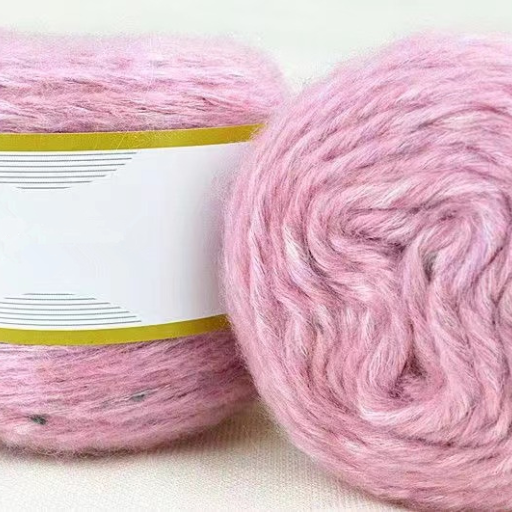
Polyester yarn has many advantages owing to its diverse uses and durable characteristics:
- Strength and Durability: Withstood easily, polyester yarn is best suited for heavy-duty purposes; it offers no resistance to wear and tear.
- Moisture Resistance: It is applicable in athletic garments and spaces sensitive to moisture due to its capability to wick moisture.
- Color Retention: Dyes are retained exceptionally well by polyester which ensures these fabrics will remain vibrant and undo fading.
- Cost Efficiency: Polyester compares best to other natural fibers, offering high-performance features at a lower price.
- Low Maintenance: Fabrics made out of polyester are not only easy to maintain, but also take little effort to wash, as they dry quickly, are wrinkle free, and require no to minimal caring.
As a result, polyesters yarns are used widely in these industries in apparel, home textiles and industsial applications.
Durability and Longevity of Polyester Fibers
The use of polyester fibers is preferred in many industries because of their extraordinary long lasting durability. The synthetic fibers also having high tensile strength, can endure a lot of wear and tear without breaking down. Polyester turns out to have very good elongation, shrinkage, abrasion resistance, and structural maintenance during harsh conditions. In addition, the fabric has a resistivity towards moisture, mold and mildew, therefore, products made of such materials can withstand different environmental factors. Research indicates that products manufactured using polyester outlast the ones produced with natural fibers, e.g., cotton, because of the synthetic composition, which isn’t as fragile. This durability allows them to be more cost-effective over time while also reducing environmental harm by minimizing the need for replacements across different uses.
Breathability and Moisture Absorption Properties
Compared to natural fibers such as cotton or wool, polyester has a relatively low moisture absorption and a low breathability rate. Its hydrophobic quality means that it does not readily absorb water, which makes perspiration stay on the skin instead of being absorbed by the garment. In any case, the moisture-wicking versions of polyester blends are now available due to the improvements in textile engineering. These blends are composed of specially designed fibers together with certain treatments that increase moisture management for the fabric. Therefore, it is suitable for use in active clothing and apparel meant for outdoor activities. These and other similar advances broadened the possibilities of using polyester for the garments of sports lovers and other people who need lightweight fabrics that dry fast.
What are the Benefits of Acrylic Yarn?

The advantages of acrylic yarn are outlined below which also describes the reason it is commonly used to make different things.
- Durability: This kind of yarn is very strong, and due to this fact it is very hard to lose shape due to saving and wear and tear.
- Lightweight: Lighter than natural fibres which is a tremendous advantage if weight is of critical concern.
- Affordability: More affordable rates than pure wool and cotton also make acrylic a favourite choice among consumers.
- Moisture Resistance: Because water is repelled to some degree, it can be used in water-ridden conditions.
- Color Retention: Guaranteeing lively colours with long-lasting effects means they absorb dye exceptionally well so they will look prudent after covering.
These characteristics enable acrylic yarn to be useful and suitable for different types of crafting, knitting, and crocheting activities.
Softness and Comfort of Acrylic Fibers
Acrylic fibers are progressively soft and comfortable because of recent advances in their production. New methods of manufacturing focus on the arrangement of the fibers to imitate natural wool or cotton. For example, the use of crimped or textured fibersuller fibers differentiating plush,” or enhance acrylic’s already rich softness. In addition, acrylic fibers’ weightless quality makes garments comfortable for long spells of wear. Studies show that acrylic’s blendability with other fibers like nylon or spandex adds to softness while making them stronger and more durable. These changes have made acrylic fibers wonderfully suited for clothing and home textiles where low cost, high comfort, and softness are required. Expanding their use beyond home textiles and clothing.
Affordability of Acrylic Yarn Compared to Polyester
Acrylic yarn advantages over polyester have always been cost-related due to ease of production methods of obtaining its raw materials. The manufacturing of acrylic yarn uses polymerization techniques that are simpler, thus making it less expensive while maintaining quality. Also, raw materials used for acrylic yarn are often available in stable market prices, like acrylonitrile. In contrast, polyester has a fluctuating price because it contains petroleum products which are always changing in price due to the oil market. With these costs, industry reports claim that acrylic yarn becomes more and more attractive since it is sold at a lower price per pound than other options. Alongside the price advantage, its lightness and warmth further cement its appeal as a textile where a lower price is a priority.
How Does Environmental Impact Differ Between Polyester and Acrylic?

The differences between polyester and acrylic regarding microplastics pollution, their respective eco-footmarks, and post-consumer recycling focus on their production processes. The making of acrylic items outputs copious amounts of hazardous waste, and like its polyester counterpart, it too has the potential to exacerbate microplastics pollution. Despite the focus on polyester losing the overall eco-friendly race, on average, the recycling potential of polyester proves to be more of a blessing compared to acrylic. This is partially due to acrylic being a more chemically irritable material than polyester, resulting in both materials becoming eco-sufferers.
Manufacturing Process of Polyester Yarns
Petrochemicals Actavis and others have had numerous ideas that have very specfic focusses in melange towards manufacturing parts such as polymerization, spinning, and opus. Aside from the active constant innovations regarding the extraction and the subsequent processes poured in the refining of polyester, the major inhibiters include functionalities through the excision of raw materials to extract chemical derivatives like TPA and MEG. Subsequently, the extraction is followed by the sepia stage where MEG and TPA go through the basic reactions to yield polyethylene striving for full exothermodynamics on their pets.
When chilled, PET can be transformed into chips or pellets. These PET pellets can undergo a melting process which allows them to be extruded through spinnerets which have minute holes. This results in continuous filaments which can be further processed into filament yarn or staple fibers. These processes can be done if they are intended for those specific end-use applications. During extrusion, stretching and drawing of these fibers will align the molecular chains, therefore increasing tensile strength and elasticity.
Acrylic Yarn Production and Its Environmental Footprint
Acrylic yarn injures the polyacrylonitrile plastic polymer which is a by-product of petroleum for acrylic materials. The industrial procedure begins with polymerization of acrylonitrile monomer which is normally free radical, resulting in long polymer chain formation. This polymer gets dissolved in dimethylformamide DMF producing highly viscous solutions. The solution undergoes wet or dry spinning to form fibers which are later washed, dried and stretched to orient molecular structure increases strength and elasticity.
Despite its soft, warm, and inexpensive characteristics, there are serious environmental issues concerning the production of acrylic yarn. The production involves large quantities of fossil fuels which further adds to greenhouse emissions along with natural reserve exhaustion. Also, Solvents used such as DMF is very toxic and need careful management considering the health of workers and the environment. DMF and acrylic textiles also release micro plastics which add to the already existing threat to water bodies and destroy marine life. To solve these problems, new sustainable raw materials, closed-loop manufacturing technology, systems of production where the end of one process becomes the beginning of another, and biodegradable substitutes with a lower ecological footprint are necessary in the production of acrylic yarns.
Reference Sources
-
Study on Warping Parameters and Yarn Properties: Polyester yarns demonstrated superior tensile strength compared to polyacrylic and cotton yarns under various warping conditions.
-
Recycling of Textiles in India: Polyester and acrylic yarns are extensively recycled in India. Polyester is often regenerated into fibers for industrial use, while acrylic is used in products like blankets and rugs.
-
Spectroscopic Techniques in Forensics: Polyester and acrylic fabrics were analyzed for their interaction with body fluids using spectroscopic methods.
Frequently Asked Questions (FAQs)
Q: What are the main differences between polyester yarn vs acrylic yarn?
A: The main differences lie in their composition and properties. Polyester yarn is made from polyethylene terephthalate, while acrylic yarn is derived from acrylic polymer. Polyester is known for its strength and durability, whereas acrylic yarn is softer and offers a wool-like feel.
Q: Is polyester yarn vs acrylic yarn better for specific projects?
A: It depends on the project. For items that require durability and resistance to wrinkles, polyester yarn is more suitable. In contrast, if you want something soft and warm, acrylic vs polyester might lean towards acrylic yarn.
Q: How does the breathability of polyester vs acrylic yarn compare?
A: Polyester yarn is less breathable than natural fibers like cotton, while acrylic yarn is generally considered more breathable than polyester. However, neither synthetic yarn is as breathable as natural fibers like cotton or wool.
Q: Which yarn is more comfortable to wear, polyester yarn or acrylic yarn?
A: Acrylic yarn is often deemed more comfortable to wear due to its soft texture. Polyester yarn, while durable, may not provide the same level of comfort against the skin.
Q: Can polyester yarn absorb moisture better than acrylic yarn?
A: No, polyester yarn is less effective at absorbing moisture compared to acrylic yarn. Acrylic yarn can absorb some moisture, but neither is as moisture-wicking as natural fibers like cotton.
Q: Are there any environmental concerns associated with acrylic vs polyester yarn?
A: Yes, both acrylic and polyester yarns have environmental concerns due to their synthetic origins. The production of acrylic involves acrylic acid, while polyester is derived from terephthalic acid and glycol, which can impact the environment negatively.
Q: What are the advantages of using polyester yarn over acrylic yarn?
A: Polyester yarn is more durable, better at resisting wrinkles, and quick-drying. This makes it a suitable and efficient yarn type for projects that require longevity and easy maintenance.
Q: Which type of yarn should I choose for knitting warm garments, polyester or acrylic?
A: For warm garments, acrylic yarn is typically preferred due to its softness and warmth. Polyester yarn, while durable, may not provide the same level of warmth as acrylic.
Q: Is acrylic yarn suitable for all types of projects compared to polyester yarn?
A: Acrylic yarn is versatile and suitable for a variety of projects, especially those requiring softness and warmth. However, for projects that need durability and resilience, polyester yarn may be the better choice.








